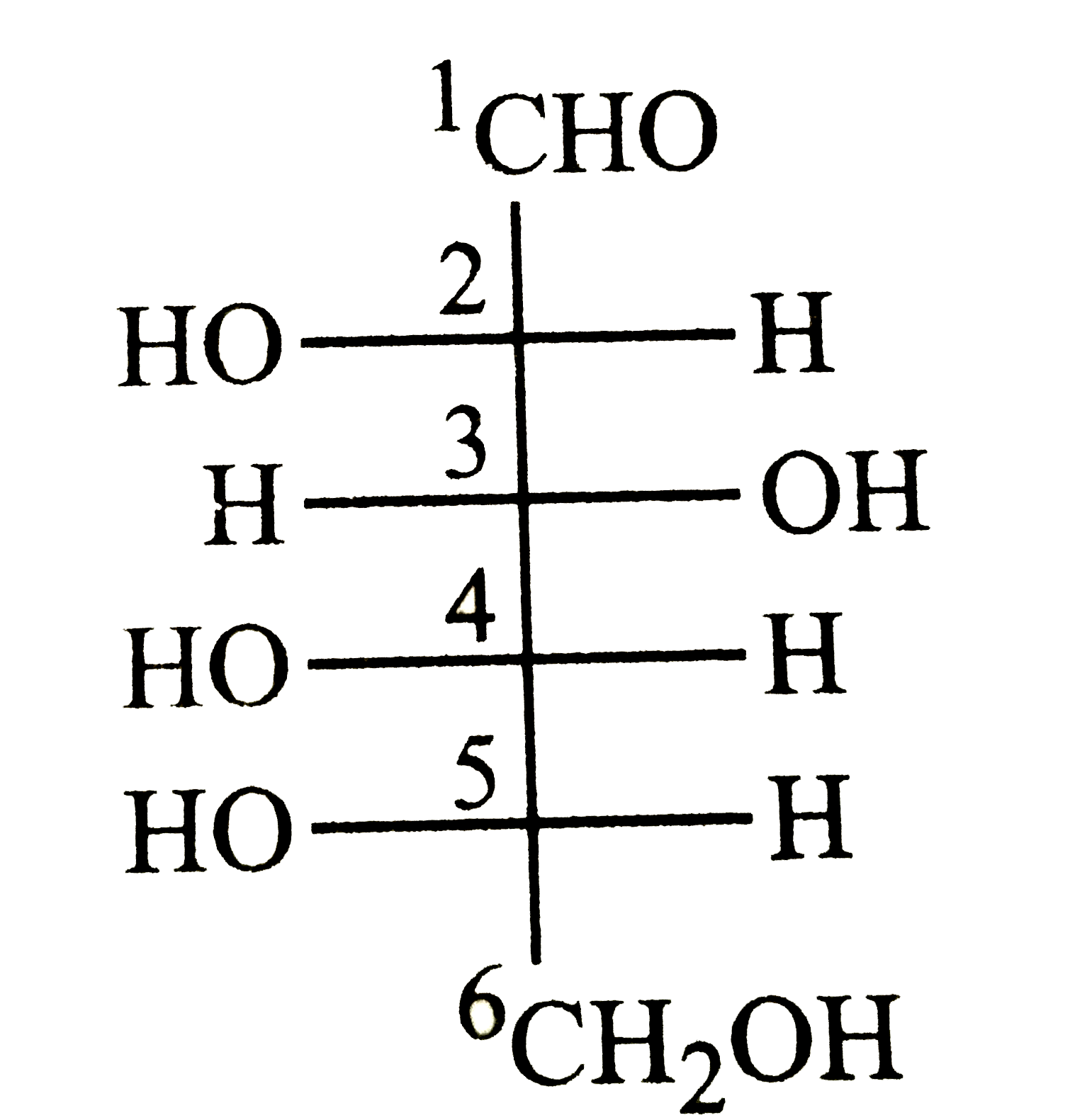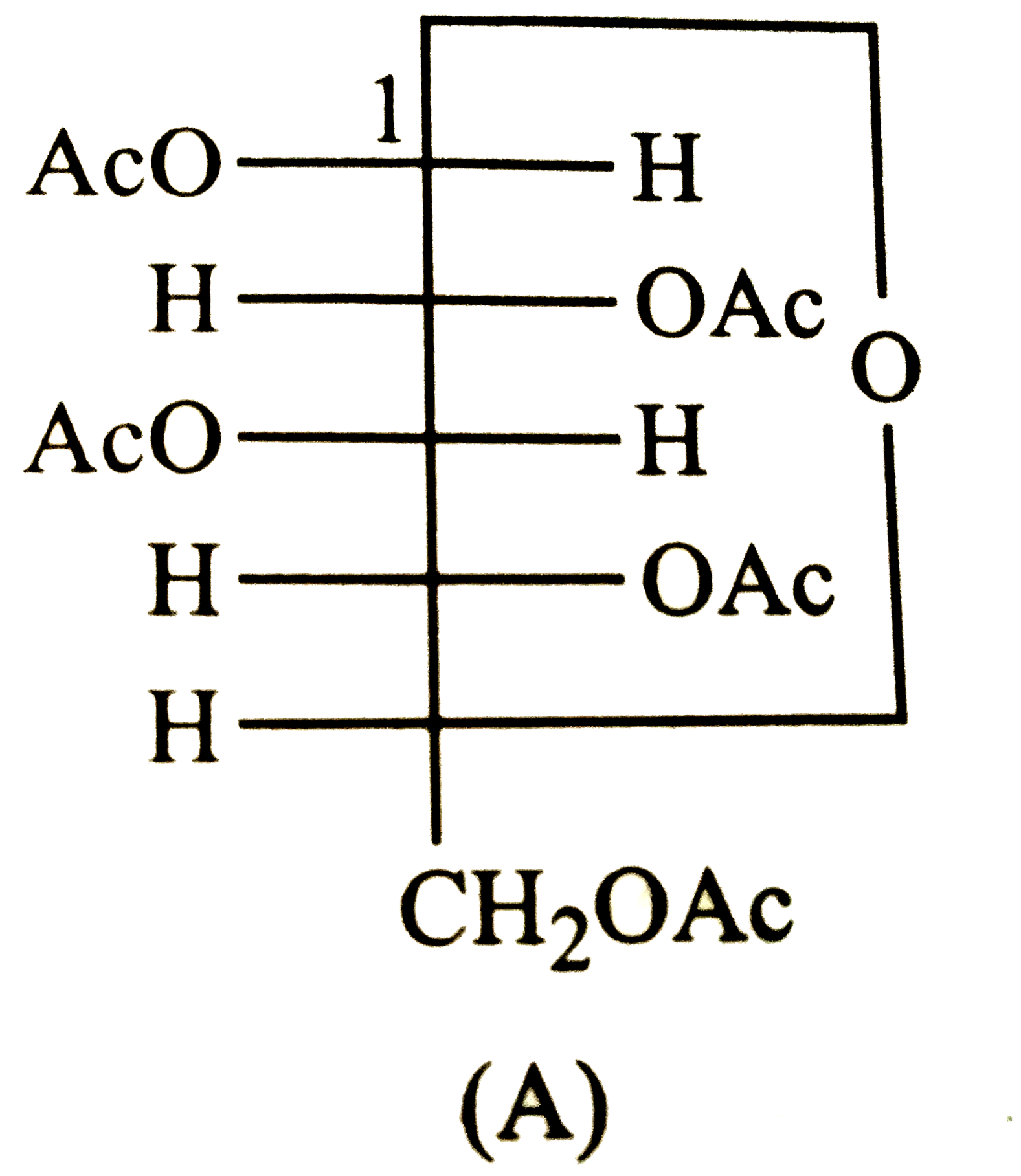Complete Solutions to Short Answer Questions of chapter BIOMOLECULES of Class 12 book with complete answers and questions
| Class 12 | CHEMISTRY |
| Chapter | BIOMOLECULES |
| PRADEEP | Short Answer Questions |
| Number Of Questions | 100 |
| Academic Year | 2023-24 |
Name the sugar present in milk. How many monosaccharide units are present in it ?
01:27View SolutionHow do you explain the presence of all the six carbon atoms in glucose in a straight chain?
01:30View SolutionIn nucleoside, a base is attached at 1' position of sugar moiety. Nucleotide is formed by linking of phosphoric acid unit to the sugar unit of nucleoside. At which position of sugar unit is the phosphoric acid linked in a nucleoside to give a nucleotide?
03:21View SolutionName the linkage connecting monosaccharide units in polysaccharides.
02:02View SolutionUnder what condtions glucose is converted to gluconic acid and saccharide acid?
02:08View SolutionMonosaccharides contain carbonyl group hence are classified, as aldose or ketose. The number of carbon atoms present in the monosaccharide molecule are also considered for classification. In which class of monosaccharide will you place fructose?
02:43View Solution. Predict whether the following compound has 'D' or 'L' configuration.
 01:17View Solution
01:17View SolutionAldopentoses named as ribose and 2-deoxyribose are found in nucleic acids. What is their relative configutation?
03:51View SolutionWhich sugar is called invert sugar? Why is it called so?
02:42View SolutionAmino acids can be classified as `alpha-,beta-,gamma-,delta`-and so depending upon the relative position of amino group with respect to carboxyl group. Which type of amino acids form polypeptide chain in proteins?
03:08View Solution`alpha-`helix is a secondary structure of proteins formed by twisting of polypeptide chain into right handed screw like structure. Which type of interactions are responsible for making the `alpha`-helix structure stable?
02:07View SolutionSome enzymes are named after the reaction, where they are used. What name is given to the class of enzymes which catalyse the oxidation of one substrate with simultaneous reduction of another substrate?
01:40View SolutionDuring curdling of milk, what happens to sugar present in it?
01:31View SolutionHow do yout explain the presence of five `-OH` groups in glucose molecule?
02:32View SolutionWhy does compound (A) given below not form an oxime ?
 01:42View Solution
01:42View SolutionWhy must vitamin C be supplied regularly in diet?
00:47View SolutionSucrose is dextrorotatory but the mixture obtained after hydrolysis is laevorotatory. Explain.
02:33View SolutionAmino acids behave like salts rather than simple amines or carboxylic acids. Explain.
02:09View SolutionStructure of glycine and alanine are given below. Show the peptide linkage in glycylalanine.
`underset(("Gylcince")" "("Alanine"))(H_(2)N-CH_(2)-COOH, H_(2)N-underset(CH_(3))underset(|)(CH)-COOH)`02:11View SolutionProtein found in a biological system with a unique three-dimensional structure and biological activity is called a native protein. When a protein in its native form, is subjected to a physical change like change in temperature or a chemical change like, change in pH, denaturation of protein takes place. Explain the cause.
03:28View SolutionActivation energy for the acid catalysed hydrolysis of sucrose is `6.22 kJ mol^(-1)`, while the activation energy is only `2.15 kJ mol^(-1)` when hydrolysis is catalysed by the enzyme sucrase. Explain.
02:52View SolutionHow do you explain the presence of an aldehydic group in a glucose molecule?
01:39View SolutionWhich moieties of nucleosides are involved in the formation of phosphodiester linkage present in dinucleotides? What does the word diester in the name of linkage indicate? Which acid is involved in the formation of this linkage?
05:48View SolutionWhat are glycosidic linkages ? In which type of biomolecules, are they present ?
04:40View SolutionWhich monosaccharide units are present in strach, cellulose and glucose and which linkage link these units?
03:21View SolutionHow do enzymes help a substrate to be attacked by the reagent effectively?
02:37View SolutionDescrive the term D- and L-configuration used for amino acids with exmaples.
03:01View SolutionHow will you distinguish `1^(@)` and `2^(@)` hydroxyl groups present in glucose? Explain the reactions.
02:30View SolutionCoagulation of egg white on boiling is an example of denaturation of protein. Explain it in terms of structural changes.
02:57View SolutionWrite the major classes in which the carbohydrates are divided depending upon whether these undergo hydrolysis and if so , on the number of products formed.
04:57View SolutionCarbohydrates are classified into monosaccharides , oligosaccharides and polysaccharides.
(i) What is the basis of such classification ?
(ii) Give an example of the oligosaccharide.05:24View SolutionWhat are reducing sugars. Give an example each of a reducing sugar and a non - reducing sugar.
03:25View SolutionWrite chemical reaction for following conversions
glucose into glucoxime01:56View SolutionWhat happenes when `D-`glucose is treated with the following reagents?
(i). `HI`
(ii).Bromine water
(iii). `HNO_(3)`02:31View SolutionHow will you obtain from glucose : (i) gluconic acid (ii) n-hexane ?
02:31View SolutionGive chemical reactions to show glucose :
(a) all the six carbon atoms are linked in a straight chain.
(b) one aldehyde group is present.02:24View SolutionD-Glucose and L-Glucose are :
02:40View SolutionGive three reactions of glucose which cannot be explained by its chain structure.
02:06View SolutionExplain muta rotation taking D-glucose as example.
02:32View SolutionWhat is essentially the difference between `alpha-`glucose and `beta-`glucose ? What is mean by pyranose structure of glucose ?
02:03View SolutionWhat is the difference in the structures of `alpha-D(+)` glucose and `beta-D(+)` glucose ?
02:23View SolutionWhat is meant by pyranose ring of glucose ?
03:12View SolutionWhat are monosaccharides ? Draw ring structure of `alpha-D-(+)`-glucopyranose ?
02:33View SolutionHow do `alpha` and `beta`-D-glucose differ ? Write their pyranose structures.
03:00View SolutionHow does fructose differ from glucose ? Draw their open chain structures.
03:30View SolutionWhat is the basic structural difference between glucose and fructose ?
01:02View SolutionIndicating linkage involved draw the structure of sucrose. Also name the linkage.
04:58View SolutionName the products of hydrolysis of sucrose. Why is sucrose not a reducing sugar ?
03:07View SolutionLACTOSE
07:15View SolutionWhich of the following is an example of Zwitter ion?
02:10View SolutionWhat are the polysaccharides that make up starch and what is the difference between them?
02:03View SolutionDraw the structure of amylopectin.
03:01View SolutionDraw the structure of amylose.
02:23View SolutionWrite the structure of cellulose ? How does it differ from amylose ?
05:36View SolutionWhy do individuals differ from one another?
01:38View SolutionWhat is the basic structural difference between starch and cellulose?
01:48View SolutionWhat are carbohydrates ? Give important functions of carbohydrates.
04:38View SolutionWhat are carbohydrates ? How do they act as source of energy ?
04:09View SolutionWhat are proteins ? Name the compounds obtained on partial and complete hydrolysis of proteins.
02:38View SolutionWhat are `alpha`-amino acids ? How are they related to proteins ? Give the structures of two `alpha`-amino acids.
02:05View SolutionWhat are essential and non-essential amino acids ? Give one example of each type.
01:46View SolutionAmino acids may be acidic, alkaline or neutral. How does this happen ? What are essential and non-essential amino acids ? Name one of each type.
03:11View SolutionWhat are amino acids ? Describe their zwitterion structure. What do you know about the isoelectric point of amino acids ?
04:04View SolutionDifferentiate between the following :
Peptide linkage and Glycosidic linkage03:19View SolutionILLustrate the formation of a peptide bond by taking a suitable example.
02:27View SolutionWhat is peptide linkage? How is tripeptide formed?
15:04View SolutionWhat is peptide bond ? Cite one example of a molecule in which peptide bond is present.
02:58View SolutionPeptide bond is formed between two amino acids through
02:16View SolutionWhat are peptides ?
02:00View SolutionWhat are polypeptides ? How are they named ?
05:48View SolutionHow are oligopeptides different from polypeptides ?
02:10View SolutionDistinguish between peptides and proteins.
04:21View SolutionWhat are proteins ? How are they classified ? Give two functions of proteins.
04:44View SolutionWhat are proteins ? Describe simple and conjugated proteins with at least one example in each case .
02:04View SolutionDistinguish between the following:
(i) A globular protein and a fibrous protein.
(ii) Primary and secondary structure of proteins.04:52View SolutionWhat is meant by tertiary structure of proteins ?
02:55View SolutionWhat the denaturation of proteins ?
01:57View SolutionWhat is the effect of denaturation on the structure of proteins?
01:21View SolutionAntibodies that help to fight infectious agents are
01:42View SolutionWhat are enzymes ? Give two example with uses.
03:38View SolutionA biocatalyst
02:14View SolutionDefine enzymes ? What is the most important reason for their specific action ?
06:13View SolutionMost important form of energy currency in living systems is the
02:05View SolutionWhat are chemical messengers ?
02:07View SolutionWhat are vitamins ? How are they classified ?
02:35View SolutionName the male and female sex hormones.
02:13View SolutionGive one example of each type of dopants.
00:50View SolutionWhat are hormones? Give examples. State their functions.
04:14View SolutionA peptide hormone is :
04:44View SolutionName two amine hormones.
03:25View SolutionChemical nature of insulin is
01:16View SolutionName the organs or cells which secrete Thyroxine and Adrenaline. State their functions.
02:21View SolutionHow are vitamins classified? Mention the chief sources of vitamins A and C.
01:57View SolutionName the deficiency diseases resulting from lack of Vitamins A and E in the diet.
02:13View SolutionName of disease caused due to deficiency of Vitamin-C
01:06View SolutionName the disease caused due to lack in insulin secretion.
02:50View SolutionDeficiency of which vitamin causes scurvy ?
01:44View SolutionThe deficiency of which vitmain causes the disease pernicious anaemia ?
02:06View SolutionName two fat soluble vitamins, their sources and the diseases caused due to their deficiency.
02:30View SolutionName two water soluble vitamins, their sources and diseases caused due to their deficiency in diet.
03:07View Solution
Short Answer Questions questions and complete solutions for chapter BIOMOLECULES of PRADEEP CHEMISTRY (HINGLISH) of Class 12
All Exercises from PRADEEP Class 12 CHEMISTRY BIOMOLECULES
- ADDITIONAL QUESTIONS (Very Short Answer Questions)
- Assertion -Reason Type Questions (Type -I)
- Assertion -Reason Type Questions (Type -II)
- ASSERTION AND REASON TYPE QUESTIONS
- Competition Focus JEE(Main and Adanced)/Medical Entrance Special (I . Multiple Choice Questions)
- Competition Focus JEE(Main and Adanced)/Medical Entrance Special (II . Multiple Choice Questions)
- Conceptual Questions
- Curiosity Questions
- Higher order Thinking skills (Hots Problems )
- Higher order Thinking skills (Questions and problems with answers/solution(Hots Questions)
- Higher order Thinking skills (Questions and problems with answers/solution(Hots Questions) P.1
- Higher order Thinking skills (Questions and problems with answers/solution(Hots Questions) P.2
- Higher order Thinking skills (Questions and problems with answers/solution(Hots Questions) P.3
- IMPORTANT QUESTIONS (FOR BOARD EXAMINATION)
- Interger type Questions
- IV. (Matching Type Questions)
- LONG ANSWER QUESTIONS
- MATCHING TYPE QUESTIONS
- Multiple Choice Questions (Comprehension )
- NCERT (EXEMPLAR PROBLEMS) (With answers, Hints And Solution) (Multiple Choice Questions-I )
- NCERT (EXEMPLAR PROBLEMS) (With answers, Hints And Solution) (Multiple Choice Questions-II )
- NCERT (EXERCISES)
- NCERT (QUESTIONS AND EXERCISES) WITH ANSWERS (NCERT INTEXT UNSOLVED QUESTIONS)
- Short Answer Questions
- TEST YOUR GRIP (FILL IN THE BLANKS )
- TEST YOUR GRIP (Multiple Choice Questions)
- Value Based Questions (with answers)
